If you are looking to buy a camera for the first time because of your interest in photography, you will be interested to know about “ZOOM in photography”. As an amateur photographer, it is essential to understand the two types of zoom in photography – Optical and Digital.
In this guide, I will cover all the aspects of zoom in photography in detail. You can use it as a beginner’s guide.
What is Zoom in photography? 

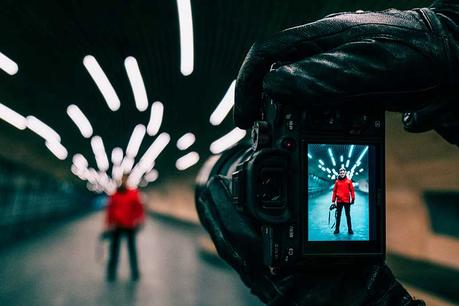
Zoom in photography means getting closer or away from the subject in the picture without moving the camera from its set position.
Thus, you can either “Zoom In” or “Zoom Out” in your camera when you capture an image.
Zoom In
You will get closer to the subject in the picture when you zoom in with your camera. Thus, the subject will occupy more area in the image.
So, the subject will appear larger in the frame.
Zoom Out
When you zoom out with your camera, you will get away from the subject in the picture. Thus, the subject will occupy less area in the image.
So, the subject will appear smaller in the frame.
What is Digital Zoom in photography?
When the camera uses the cropping feature through the inbuilt software to zoom in and out of the image, it is called Digital zoom in photography. You will get a cropped version of the actual image as the output.
There will be a reduction in image resolution when you use the digital zoom feature in your camera.
Digital Zoom Explained with an Example

The picture on the right side is a 2x digitally zoomed image. The image on the left side is without any digital zoom. The flying bird appears closer to the viewer in the second image.
If you compare the image resolution, the picture on the left will have more resolution. But the amount of details on the bird will be the same for both these images.
Is Digital Zoom the same as Cropping the Image while Editing?
Yes, digital zoom is the same as cropping the image while editing. When you digitally zoom an image in your camera, you will end up reducing the resolution of the image, chopping of its sides.
So, go for digital zooming only if your camera has a good megapixel resolution. Otherwise, you will end up with a poor-quality picture.
What is Optical Zoom in photography?
When you use the camera optics to zoom in and out of the scene, it is called Optical zoom in photography.
The camera uses the lens arrangement in front of the sensor to perform optical zooming. There will be no loss of image resolution when you use the optical zoom feature in your camera.
Optical Zoom Explained with an Example
I will show you what Optical Zoom is in photography with an example.

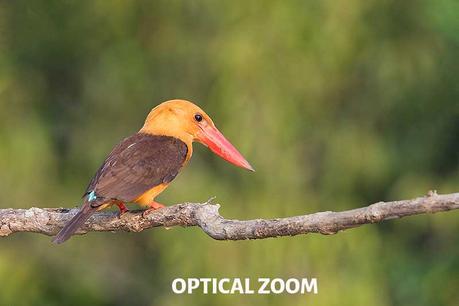
If you see the above two images, the picture on the bottom is captured using the optical zoom feature. The focal length for the first image is 100mm and for the second image, it is 300mm.
The bird occupies more area in the second image. Also, the feather details of the bird are more visible in the second one.
What is a Zoom lens in photography?
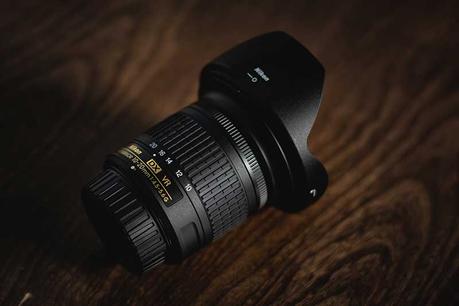
The camera lens that supports the optical Zoom in and Zoom out feature is called a zoom lens in photography.
How to Zoom In & Zoom Out in Camera? 

Different types of cameras use different techniques to zoom in and out the image.
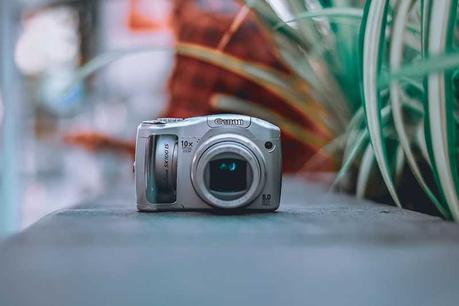
In the case of integrated lens cameras, a switch in the camera allows you to zoom in and out of the frame. You can refer to the camera user manual to know the exact button for your camera model.
If it is a DSLR or Mirrorless camera, the optical zoom will be in the lens part. Some lenses use the push-and-pull technique to zoom in and out.
While a majority of the lenses come with a “Zoom ring” in the lens. You can rotate it in a clockwise and counterclockwise direction for zooming.
How to Find the Zoom Power of your Camera or Lens?
Another thing that you need to understand as a photographer is the zoom power.
When it comes to digital cameras and camera lenses, the zoom power of the lens will be generally expressed in two different ways.
 1st Way
1st Way

If you take the case of point-and-shoot digital cameras and prosumer cameras, the lens will be integrated with the camera body.
Here, the zoom power of the camera will be 3x, 4x, 5x, 24x, etc. This number will be specified along with the camera specifications.

Example: The Prosumer camera Nikon Coolpix B500 comes with 40x optical zoom and 4x digital zoom. There will be a minimum and maximum focal length supported by this camera model. The minimum focal length is 4.0mm. The maximum focal length is 160mm. If you divide 160 by 4, it will be 40. Hence the optical zoom is 40x.
 2nd Way
2nd Way

If you consider the case of interchangeable lens cameras like DSLRs/ mirrorless cameras, you can see the zoom power in the camera lens specification.
Here, the zoom range will be from a starting “mm” to the ending “mm.” If you want to convert it to 2x or 4x like that, you need to divide the ending focal length (higher value) by the starting focal length (lower value).
ion.
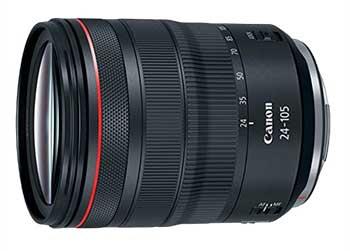
Example: The optical zoom range of the Canon RF 24-105 mm F/4 L IS USM lens is from 24mm to 105mm. Thus, the optical zoom power will be 105mm/ 24mm = 4.375x, which is approximately 4x.
If the lens is prime, there will not be a zoom feature in it. Here, the camera lens will have only one focal length.

